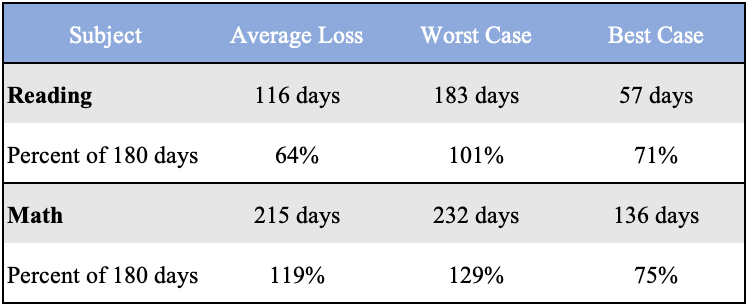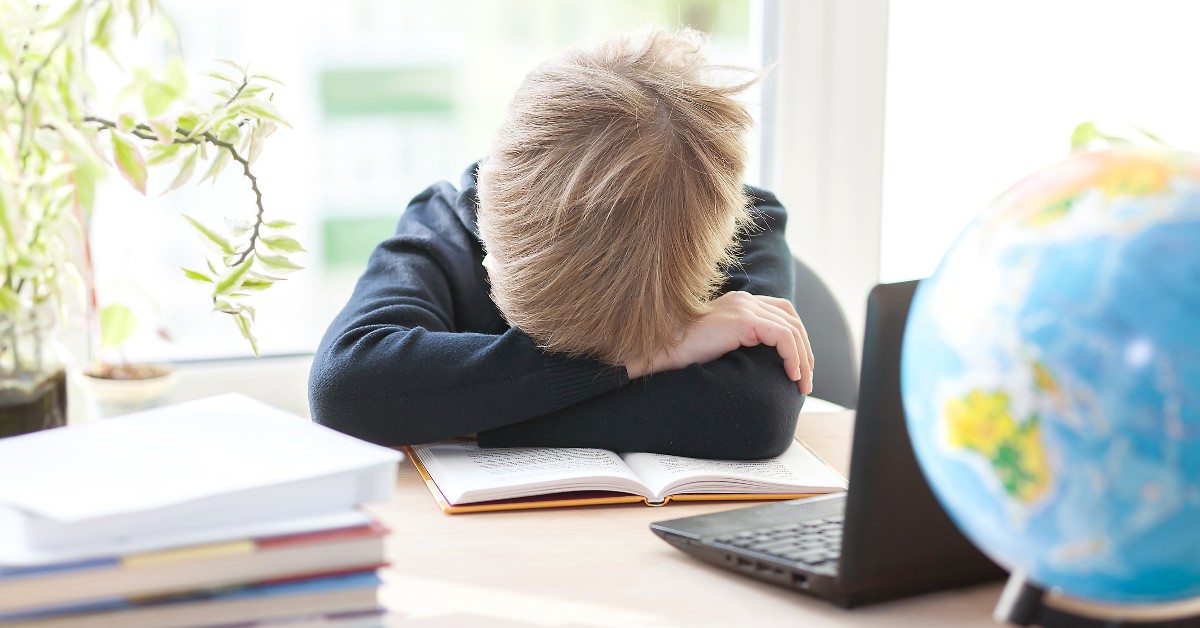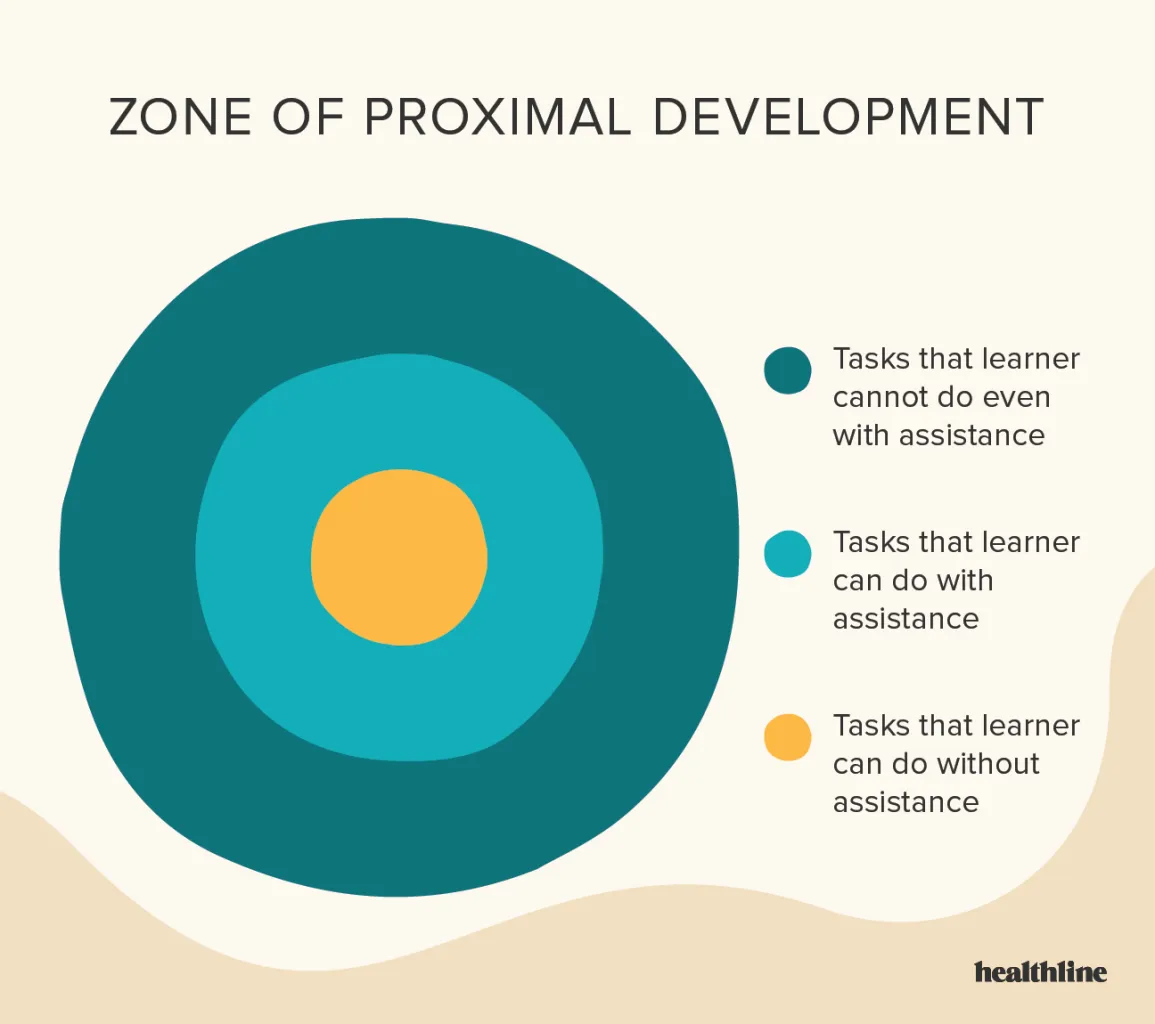by Erin Pender | September 29, 2022
The COVID-19 pandemic had widespread effects, especially in the world of education. While the pandemic necessitated a temporary shift to online learning, it soon became apparent that this alternative teaching method was resulting in an increase in learning loss among students – and it did not affect every student equally.
Defining ‘Learning Loss’ and its Impact
Learning loss is a decline in students’ knowledge or skills, and is a globally acknowledged phenomenon. Summer learning loss has long been studied, but virtual learning and COVID-19 school shutdowns are now also seen as potential causes.

A report from the Department of Education across schools in 20 states found that students lost nearly 2/3 of reading instruction (116 days) and over a full year of math instruction (215 days) due to the COVID-19 pandemic. Source: Northwestern College
Learning loss did not affect every student equally. Various factors, including race, socioeconomic status, and home life, informed just how much each individual student’s learning declined. However, even students “who spent the least amount of time learning remotely during the 2020-21 school year — just a month or less — missed the equivalent of seven to 10 weeks of math learning,” says Thomas Kane of the Center for Education Policy Research at Harvard University.
According to UNESCO, the percentage of children in learning poverty, which is defined as “being unable to read and understand a simple text by age 10,” could increase from 53% to 70% because of school closures and remote learning. Those students less likely to be able to access remote learning are girls, students with disabilities, and students of low socioeconomic status. Additionally, younger students in pivotal learning and development stages are more susceptible to greater learning loss. It is the students who are most marginalized and vulnerable who are disproportionately impacted by learning loss.
One systematic review by Robin Donnelly and Harry Anthony Patrinos from 2021 found that learning loss was clearly universal, though children in homes with uneducated parents or with a lower socioeconomic status suffered from higher learning loss. One factor which contributes to this gap is the way that the education system in America is funded; since school districts are funded by taxes, wealthier neighborhoods have more funding for remote learning options, widening the gap between wealthier and poorer districts. High-poverty schools also spent the longest duration of time functioning in a remote learning model, so students who were already behind and vulnerable experienced the most learning loss. Some of these students have no dedicated workspace, internet access, or time for schooling if they were forced to fill caretaker roles or get jobs as a result of the pandemic.

A student with his head down in his notebook, as he learns from home with an open laptop. Credit: HopSkipDrive
Students with disabilities were especially affected by school shutdowns. Before the pandemic, students in special education programs were already behind. 80% of special education students could achieve at grade level with individualized support, but only 16% were at their grade level in English and only 13% in Math. When school shutdowns occurred, these students were left with very little support, as they had little to no access to their teachers, education specialists, nurses, and other support staff. Additionally, many online platforms do not have technology to assist students with disabilities. One of the major issues with the shift to remote learning during the pandemic was the loss of support for Individual Education Programs (IEPs) and the Individuals with Disabilities Education Act.
How Federal Laws Supported Students with Disabilities Pre-Pandemic
The IDEA, an acronym for the Individuals with Disabilities Education Act, was passed in 1975 and guarantees a free and appropriate education to students with disabilities. Under the IDEA, “all public-school students receiving special education services under the IDEA must have an Individualized Education Plan (IEP)”.
For students who are not covered under the IDEA, section 504 of the Rehabilitation Act of 1973, which makes discrimination on the basis of disability illegal in federally funded programs, serves to help provide necessary educational support. Additionally, the Americans with Disabilities Act (ADA) strengthened protections for people with disabilities, including in education.
How COVID-19 Affected Learning for Students with Disabilities
As a result of measures taken during the pandemic, many parents of students with disabilities felt that schools were not providing adequate accommodations to their children. Modifications to all of the plans for special education were not made in the quick shift to remote learning. The Coronavirus Aid, Relief, and Economic Security (CARES) Act allowed the Secretary of Education to appeal to Congress to waive certain requirements for special education under the IDEA, leading to fewer resources for those students.
In February of 2020, it was reported that only 11% of students with disabilities were receiving necessary accommodations and services. In October of the same year, that was down to 8%, and by April of 2021, 44% of families said that efforts to provide accommodations and services were completely abandoned.
Without these services, parents who do not have the training and skills of special education teachers were suddenly thrown into these roles. Many parents could not offer the same kind of support students would receive in school as a result of their own responsibilities, including work and childcare. In a remote setting, there was less access and less time for speech/language, occupational, and physical therapies. This loss of support and disruption of routine also led to “depressive symptoms, acting out, and changes in behavior” in many children, particularly with the social isolation they experienced.
Ways to Combat Learning Loss

Three rings of a circle depict the Zone of Proximal Development, with the inner ring showing tasks that someone can do independently, the middle ring illustrating tasks that someone can do with assistance, and the outer ring depicting tasks that someone cannot do even with assistance. Credit: Healthline
What can be done to combat learning loss? Actually, quite a lot.
Specifically for students in special education programs, IEP services should be restarted and adapted. One paper from the San Francisco Law Review stated, “‘(1) plan with equity and individualization in mind, (2) collaborate and communicate with families, and (3) review and, if necessary, revise IEPs and 504 plans to be responsive to the child’s needs’”. Some parents also wanted to receive detailed lesson plans before the lesson day, and training in how to help facilitate their child’s virtual learning.
In general, schools can focus on improving learning efficiency; one theory looks at the Zone of Proximal Development, which is the area of material between what a student can learn on their own and what they need constant support to learn. If the middle zone is targeted, students are much more likely to be successful.
Schools can also offer high-dosage tutoring: frequent tutoring sessions with small groups of students. Some also suggest adding more learning time, but that would increase stress on parents and already overburdened teachers.
Governments can increase the budget for education and ensure that teachers have the necessary support and training to help them to do their job.
Here at Frenalytics, we hope that our fun and engaging learning software can help all students achieve their academic goals. By personalizing the learning process, FrenalyticsEDU can aid students in retaining the information they are taught at school. Educators and parents can also use the platform to facilitate student learning and participation, and to encourage review of the lessons taught in the classroom.
Learning loss as a result of the pandemic is a very real situation, and the world has not yet felt its full ramifications. As students continue to readjust to school and teachers and parents try to help fill the gaps in students’ education, many strategies can be employed to do so.
Want to see how FrenalyticsEDU helps students of all abilities live more independent lives? Sign up for FrenalyticsEDU Free!
Click here to create a free account, or give us a call at (516) 399-7170.
Erin Pender is a junior at Boston College studying English, Marketing, and Biology. Her time at Frenalytics has allowed her to explore the business of helping others, and to gain new insights into special education and memory rehabilitation. Outside of work and school, Erin enjoys singing, being in nature, and volunteering with young students. Contact Erin: erin@frenalytics.com

